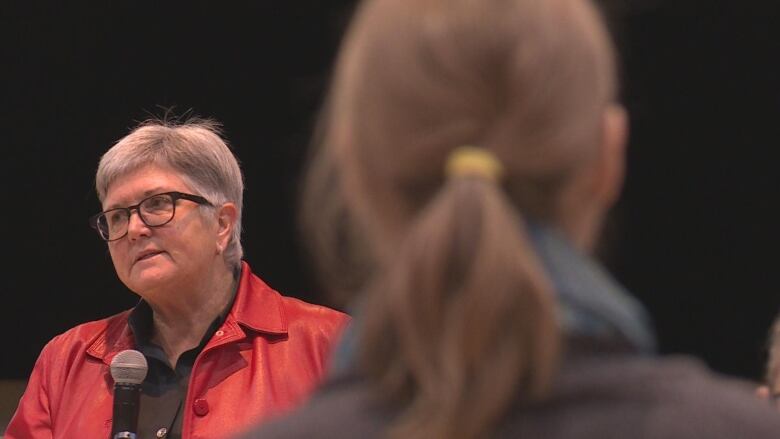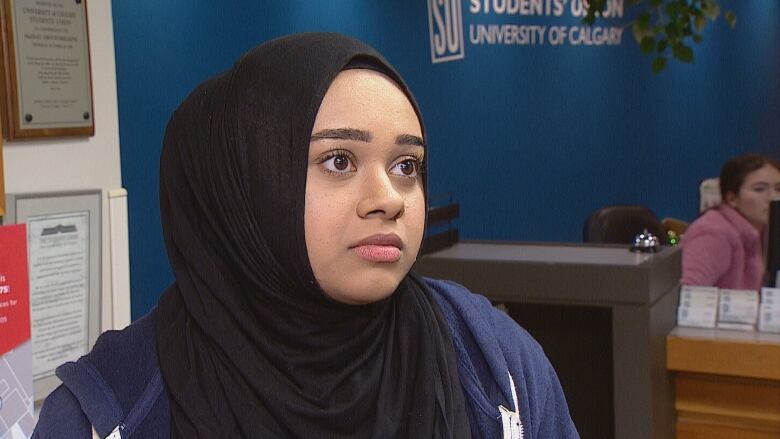Why students and institutions welcome change in Alberta's post-secondary funding model
Minister wants to make institutions more accountable to performance measures

Changes are coming to the way post-secondary institutions are funded in Alberta, and the province will have more to say on this "soon."
With hints the province is looking to tie Advanced Education funding to certain performance measures, Calgary's institutions are welcoming a change even if the details aren't out there yet.
And while student leaders withthe Council of Alberta University Students (CAUS) are optimistic about a new model, they're cautious, not wanting to create a system that may disadvantage learners based on school choice.
In an editorial submitted to Postmedia, Advanced Education Minister Demetrios Nicolaides said students currently contribute 20 per cent of their educational costs through tuition, while taxpayers account for 50 per cent.
He said the province's tuition changes will adjust those figures to 25 per cent and 45 per cent, respectively.

Dru Marshall, University of Calgary provost, says there's a lot of details to shake out, but her institution welcomes the approach.
"We are an institution that is evidentiary based and has measured our performance in great detail over the last decade," Marshall said. "So we welcome that approach."
Since 2011, the University of Calgary has been following a strategy dubbed "Eyes High" with its own set of performance measures and ultimate goal to be recognized among the top five research universities in the country.
Marshall says she's working with the Ministry of Advanced Education closely to see what the province's approach looks like.

CAUS chair Sadiya Nazir says her student advocacy group is also trying to work with the government on implementing several priorities for learners.
"We want to ensure that students who struggle to get into classes due to seat capacity won't be negatively impacted by metrics of this type," Nazir said.
"And similarly with graduation completion, and the earning potentials for those, so the fields with lower earning potentials, we want to see those protected if this were to be a metric."
She says that, ultimately, students want a transparent and accountable model they can hold institutions to which is why they are cautiously optimistic about the province's plans for a funding review.

At Mount Royal University, president Tim Rahilly is ready for a dialogue about funding. He says the province has the right to ask post-secondaries to be accountable, especially to the taxpayer.
"The challenge for post-secondary institutions is to figure out how to marry that, if you will, with our mission and vision of what we're trying to accomplish in terms of educating people and producing work-ready graduates," Rahilly said. "I think there's a lot of nuance in this."
Building a future workforce
And one of the things Rahilly says needs to be baked into discussions is planning for the workforce of the future.
"There's a strong desire not only from the individual institutions to work with government, but I think the sector as a whole," Rahilly said. "I think all of us are quite excited with the notion of having a discussion about the value you know, why we have post-secondary education."
Bow Valley College president Laura Jo Gunter says they are excited about the fact that the province is moving to performance-based-metrics.
"It could be things like completion rates, right?" Gunter said. " It could be things like how many people are graduating, how many people are getting employment? And because we're a college we're all about getting people jobs."
Emulating British Columbia, Ontario
Currently, collegeand universityoperations are funded through the Campus Alberta Grant. The capital and operating grants are calculated annually by the provincial government.
But the MacKinnon report, released last year, hints the province wants to shift how it funds institutions, looking to create a revenue mix similar to what Ontario and British Columbia have.
"We are currently looking at new and improved funding approachesthat will give taxpayers more value for their investment and help increase accountability and transparency within the system," said Laurie Chandler, press secretary for the Advanced Education minister.
"We will have more to say about this soon."

Last year, the Ontario government announced 60 per cent of its post-secondary funding would be tied to performance in 10 different measures, or metrics. Some of those include graduate earnings and proportion of graduates employed full-time in a related or partially-related field.
According to information from Statistics Canada, in the 2016-17 school year, both Ontario and British Columbia's post-secondary funding per full-time equivalent student fell below the Canadian average.
British Columbia allotted $9,748, Ontario spent $7,841 and Alberta provided $13,959 per full-time equivalent.












_(720p).jpg)


 OFFICIAL HD MUSIC VIDEO.jpg)
.jpg)



























































































